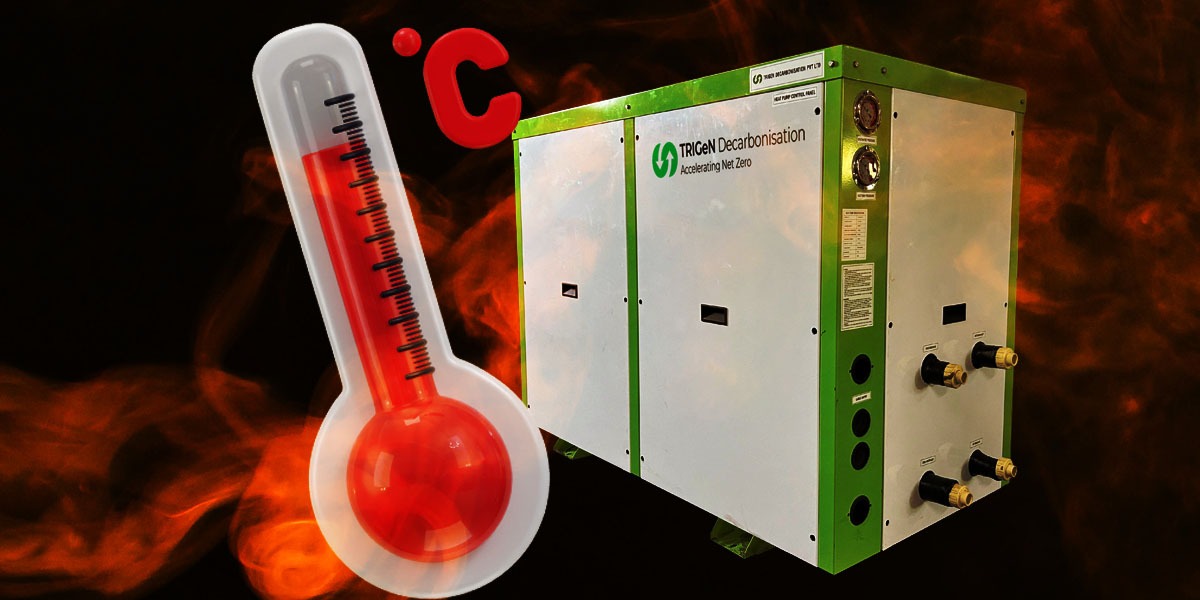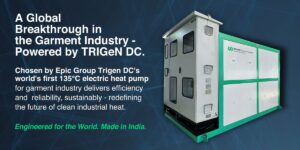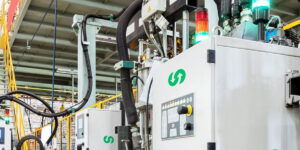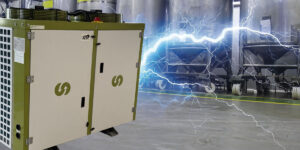Revolutionizing Industrial Heating: The Power of High-Temperature Heat Pumps
In today’s fast-changing energy landscape, industrial heating is under the spotlight like never before. For decades, industries have been relying on fossil-fuel-based systems like boilers and furnaces to generate heat. While effective, these traditional systems come at a high cost, not just financially, but environmentally.
With rising pressure to meet sustainability targets, reduce carbon footprints, and cut long-term energy costs, industries need a smarter, cleaner alternative. Enter high-temperature heat pumps (HTHPs) — a breakthrough in industrial heating solutions.
At Trigen DC, we believe HTHPs are not just the future — they are the present. Let’s explore why.
Why Industrial Heating Needs a Revolution
Industrial heat accounts for nearly two-thirds of total energy demand in the manufacturing sector and a large share of CO₂ emissions globally. Most of this heat is generated using fossil fuels, which are inefficient and harmful to the environment.
As ESG (Environmental, Social & Governance) frameworks become more central to corporate strategy, and with government regulations tightening, industrial leaders can no longer ignore the need to transform how they generate heat.
The current model is outdated. The future is electric, efficient, and renewable, and high-temperature heat pumps are leading the way.
What Are High-Temperature Heat Pumps (HTHPs)?
In simple terms, a heat pump moves heat from one place to another using electricity, much like an air conditioner, but in reverse. While standard heat pumps are widely used in homes and offices, they typically only reach temperatures up to 50–60°C.
High-temperature heat pumps are different. These advanced systems can deliver heat above 100°C consistently, with some models reaching up to 200°C or more, making them ideal for industrial applications.
They extract heat from ambient sources like air, water, or even waste heat streams, upgrade it using electricity, and deliver it where it’s needed — all with much lower emissions or in an environmentally friendly way.
Benefits of High-Temperature Heat Pumps in Industrial Settings
1. Significant Reduction in Carbon Emissions
Switching from fossil fuels to HTHPs cuts CO₂ emissions by up to 70–90%, especially when paired with renewable electricity sources like solar or wind.
2. Energy Efficiency Gains
HTHPs use less energy to deliver the same amount of heat. Their Coefficient of Performance (COP) — a measure of efficiency — often ranges between 2.5 to 4, meaning they can deliver 2.5 to 4 times more thermal energy per unit of electricity.
2. Energy Efficiency Gains
HTHPs use less energy to deliver the same amount of heat. Their Coefficient of Performance (COP) — a measure of efficiency — often ranges between 2.5 to 4, meaning they can deliver 2.5 to 4 times more thermal energy per unit of electricity.
3. Integration with Renewable Energy
Since HTHPs run on electricity, they work seamlessly with green energy technologies, enabling industries to shift toward net-zero operations.
3. Integration with Renewable Energy
Since HTHPs run on electricity, they work seamlessly with green energy technologies, enabling industries to shift toward net-zero operations.
4. Cost Savings Over Time
While upfront costs may be higher, operational savings are substantial. Lower fuel bills, reduced maintenance, and long-term price stability of electricity make HTHPs a wise investment.
Industrial Applications Across Sectors
HTHPs are not just theoretical — they are being deployed in real-world factories and plants. Industries now exploring or adopting this technology include:
- Food and Beverage – for pasteurization, drying, and sterilization.
- Pulp and Paper – replacing steam boilers in drying and processing.
- Textile Manufacturing – dyeing and washing, calendering and drying processes.
- Chemical and Pharma – precise heat control in sensitive operations.
- Automotive manufacturing – For plating, phosphating, degreasing, and painting applications.
- District Heating – clean energy for urban and industrial heat networks.
Real-World Case Studies & Pilot Projects (Coming Soon)
We’re building a library of success stories where HTHPs have delivered measurable benefits, such as energy saved, temperature delivered, and emissions reduced. Stay tuned as we showcase our growing impact across Indian and global industries.
Challenges and Limitations of HTHPs
While the potential is huge, HTHPs do face a few barriers:
- Initial Investment – Cost of equipment and retrofitting existing systems.
- Temperature Limitations – Not all processes are yet compatible.
- Awareness & Training – Many engineers and managers are still new to this tech.
- Infrastructure Readiness – May need grid upgrades or backup systems.
Despite these challenges, the technology is evolving rapidly, and early movers will gain the most.
How Trigen DC Is Leading the Clean Heat Revolution
At Trigen DC, we specialise in helping industries transition from fossil-fuel systems to decarbonized, distributed energy solutions.
Here’s how we’re making a difference:
- Customized HTHP Solutions – Designed to match your process and temperature needs.
- Technology Integration – Linking HTHPs with thermal storage, solar panels, and smart energy controls.
- Strategic Consulting – From feasibility studies to full project execution.
- End-to-End Support – Covering design, installation, commissioning, and post-deployment analytics and service support
We’re already working with manufacturers, industrial clusters, and policymakers to scale the electrification of heat in India and beyond.
Future Outlook: A Path to Net Zero
The shift toward net-zero manufacturing cannot happen without decarbonizing heat. HTHPs will play a central role, especially when paired with:
- Thermal storage systems for managing peak loads.
- Smart grids for optimized power use.
- AI-driven controls for predictive maintenance and efficiency.
- Government incentives that make adoption more affordable.
The technology is here, and so is the urgency. The question is: Are you ready to lead the change?
Conclusion
The world of industrial heating is changing — and for good reason. High-temperature heat pumps offer a clean, efficient, and future-ready solution to one of the biggest energy challenges industries face today.
With growing ESG demands and rising fuel costs, there’s never been a better time to upgrade. Whether you’re looking to reduce emissions, save energy, or boost your bottom line, Trigen DC can help you every step of the way.
✅ Explore how your facility can adopt high-temperature heat pumps for a cleaner, cost-effective future — Contact Trigen DC at https://trigendc.com/ or reach out to us at +919599206761.






